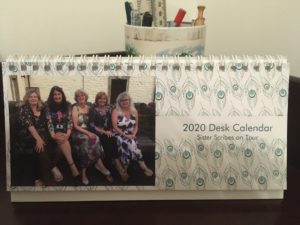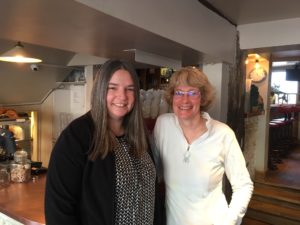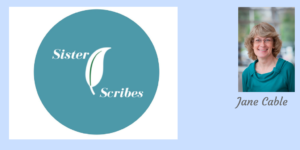Sarah Coles, head of finance, Hargreaves Lansdown: “2023 hasn’t been a golden year for our finances – with rising prices, mortgage rates and tax – and falling growth, house prices and morale. On paper, 2024 is looking more positive, with inflation, tax rates and childcare bills all set to drop. However, that’s not the full picture, because most tax thresholds have been frozen, and two of them are actually set to fall, so there’s a good chance a huge chunk of people will still be worse off by the time we struggle to the end of 2024. 1 January: new energy price cap The energy price cap will rise £94 (5%) from £1,834 to £1,928, after conflict in the Middle East sent oil and gas prices higher. It’s worth bearing in mind that this isn’t a fixed cap on the most you can pay: it’s a cap on prices for the average user. If you burn through more energy, or live in a large or draughty house, you could see prices rise even further. 6 January: National insurance cut Class 1 NICs, which are paid on earnings between £12,570 and £50,270, will be cut by 2 percentage points, from 12% to 10%, saving an average of £304 for basic rate taxpayers, £647 for higher rate taxpayers, and £707 for additional rate taxpayers. Sadly this isn’t the shot in the arm it appears, because frozen income tax and National Insurance thresholds will still mean we pay more tax in 2024. 31 January: Tax return deadline March: Rail fares rise Normally the government uses July's Retail Prices Index (RPI) measure of inflation to determine the increase in regulated fares the following year – although at times of very high inflation it can cap this. Last year the rise was effective from 5 March. 23 March: Temporary cut to fuel duty ends The 5p fuel duty cut was announced in March 2022, then extended another 12 months in early 2023. Unless we hear otherwise before this date, this is when it ends. However, we’re likely to get a Spring Budget before this point, so there’s hope. 31 March: Energy price guarantee ends The scheme, restricting average bills to no more than £3,000 for an average user, officially ends today – although the price cap is highly likely to have been below the guarantee since July 2023, so the guarantee hasn’t been called on since then. April: 15 hours of free childcare for the under twos Working parents will receive 15 free hours a week for children under the age of two, as the first step along the road to secure 30 hours of free childcare for all children from nine months to the start of school between now and September 2025. 1 April: New energy price cap comes into effect This is predicted to fall slightly from the January level. 1 April: TV licence fee rises The government is responsible for setting the level of the licence fee. In 2022, it announced that the fee would rise in line with inflation for four years from 2024. 1 April: Car tax rises This will rise in line with RPI. 1 April: Council tax rises Council tax rises on 1 April, but we’ve not yet had confirmation of how much by. 1 April: National Living wage and minimum wage rise takes effect On the 25th anniversary of the minimum wage, the National Living Wage will rise to £11.44 an hour – up almost 10% from £10.42, and the age threshold will fall from 23 to 21. 18-20-year-olds will also see pay rise to £8.60 per hour – up £1.11. The minimum hourly wage for apprentices will rise too. 1 April: Water bill price changes come into effect Several factors are used to determine changes in water bills, including the October inflation figure of 4.6%. 1 April: Air passenger duty rises Rates will rise with RPI, so the cheapest tax on domestic flights will be £7 and on international flights it will be £13. The rate increases with the class of the flight and the distance, so an economy flight of more than 5,500 miles will be taxed at £92, a business class seat on the same flight £202, and a seat on a private jet flying the same route £607. 1 April: Prescription charge changes could kick in NHS prescription charges in England rose 30p in April 2023. The previous year those charges had been frozen. 1 April: Fuel duty rise could be implemented At the moment, the fuel duty rise is set to go ahead – rising with RPI. This is priced into the government’s calculations, but there’s a reasonable expectation the Chancellor will announce a fuel duty freeze closer to the time. 6 April: Dividend and capital gains tax changes The threshold for dividend tax will be cut to £500 and the capital gains tax threshold to £3,000. 6 April: ISA changes From this point, you will be able to pay into multiple ISAs of the same type in a tax year - and will be able to transfer slices of ISA money you paid in during the current tax year too (previously it was all or nothing). It will be possible to hold long term asset funds and open ended property funds in an innovative finance ISA, although we don’t yet know whether any providers will make them available. The minimum age to open a cash ISA will rise to 18, closing the loophole that allows 16 and 17-year-olds to have a JISA and a cash ISA allowance in the same tax year. 6 April: Tax thresholds remain frozen This stealth tax will have an enormous impact on our finances this year, and every year until 2028. The personal allowance will stick at £12,570, the higher rate threshold at £50,270, the inheritance tax nil rate band at £325,000, and the residence nil rate band £175,000. Plus, everything from ISA allowances to the annual gifting allowance, the high-income child benefit tax charge and the personal savings allowance remain the same. The tax take will rise to its highest percentage of GDP since the Second World War, and it’s not just that we’ll all have to pay more tax, 4 million more people will be dragged into paying tax, 3 million more into paying higher rate tax and 400,000 more into paying additional rate tax. 6 April: National Insurance for self-employed people is cut Class 2 National Insurance contributions will be axed altogether (saving an average of £186 a year). The main rate of National Insurance contributions for self-employed people will also be cut by one percentage point, from 9% to 8%. This applies to profits of between £12,570 and £50,270. This will cut tax an average of £117 in tax for basic rate taxpayers, £322 for those on the higher rate, and £358 for additional rate taxpayers. Of course, frozen tax thresholds will mean they’re still worse off. 8 April: State pensions rise with the triple lock The state pension will rise 8.5% in line with the triple lock. For someone on the full new state pension this will see their pension grow from £203.85 to £221.20 a week, and for someone who hit state pension age before 2016 their full weekly basic state pension will rise from £156.20 to £169.50. 8 April: Benefits rise with inflation Those receiving working age benefits will have them increased in line with September’s inflation rate, which this year was 6.7%. Pension credit, meanwhile, will rise 8.5% in line with the triple lock. 1 July: Energy price cap changes This is currently expected to fall very slightly again from the April level. 31 July: Payment on account deadline Self-employed people need to make advance payments towards their tax bill. 1 August: Freeze on alcohol duty ends In the Autumn Statement, Jeremy Hunt said alcohol duty wouldn’t be increased before this date. So this is the first date a duty rise becomes possible. In September: 15 hours of free childcare from nine months The second stage in the roll out of free childcare will see 15 hours of free childcare extended to children from the age of nine months. 10 September: wage figures These are used as part of the triple lock for next April’s state pension. 1 October energy price cap changes This is expected to rise as we head into the winter, but forecasts this far ahead need to be taken with a pinch of salt. 16 October: inflation figures These are used as part of the triple lock for next April’s state pension, and for uprating working age benefits. 31 October: Deadline to file paper self-assessment tax return for 2023-24 We’re overwhelmingly filing our self-assessment tax returns online but those who prefer to do it on paper will need their returns to arrive with HMRC by this date. 1 December energy price cap changes So far, we haven’t had forecasts for this period, although prices are hoped to be less volatile later in 2024. 17 December: The last possible day to call the general election This would be exactly five years after the last parliament met for the first time after the previous general election – which by law is the last possible date the election can be called. If it was left to the last possible date, the election itself would be on 28 January. 31 December: The £2 cap on single bus journeys ends The £2 cap on single bus journeys in England is expected to come to an end. It saved people 30% on the average fare.”
Category Archives: Business & Careers
Women can’t catch men’s earnings, even after any children have left home
- In 2018/19, women earned an average of £22,200 and men £27,400 (median).
- Men earned more than women at every age. At 20-24, men averaged £19,100 and women £17,700.
- On average, income before tax peaked at age 40-44 at £30,200. However, it peaked for men between the ages of 45-49, at an average of £34,100, and for women at age 40-44 at £26,000.
Now is the time for us ladies to take charge of our finances. Check your state pension entitlement and make sure there are no gaps in National Insurance contributions. Also consider taking out a LISA.
HMRC has issued a range of tax and income statistics: https://www.gov.uk/government/
Sarah Coles, personal finance analyst, Hargreaves Lansdown:
“Women are out-earned by men at every stage of their career, so if women are waiting for a better time to get started with their financial plans, they could be in for a very long wait.
Despite the fact that on average female students get better results at school, are more likely to go to university, and get more first class and upper second degrees, when they emerge from the education system, men are paid more. Between the ages of 20 and 24, women earn 7% less.
The official pay gap – which measures people doing the same work – is close to zero below the age of 40, so the difference is likely to owe much to the careers dominated by women being lower paid than those dominated by men, and how we value particular skills as a society. It’s also influenced by more women working part time from the outset, and some starting families at younger ages.
The gap between the average pay of women and men widens dramatically when people reach the age when they typically start a family. By their early 30s the gap is 13%, and by their early 40s it’s 22%. This is partly because women are overwhelmingly more likely to take career breaks in their children’s early lives, and make compromises over working hours and commutes in order to have more flexibility during their children’s school years.
There’s no time to catch up afterwards either, because not only are women paid far less later in their career, but they reach their peak earning years well before men too – at the age of 40-44 rather than 45-50. This owes something to the fact that senior management roles tend to have a later pay peak, so women continue to pay for missing out on promotions during key childcare years.
Women are also paid less later in their careers partly because once they have taken a financial hit relatively early on, they’re in the frame for any caring responsibilities that come along – including caring for elderly parents. This may mean they have to move into working part-time once again.
A solution to unequal pay requires a combination of an awful lot of things – from changing the way different skills are rewarded, to altering the balance of caring responsibilities in the home, and building workplaces that allow equality of flexibility. The pandemic may help accelerate some of this change, by revealing just how many jobs can be effectively completed with a much higher degree of flexibly, but this kind of societal change tends to be slow and incremental.
It means women can’t afford to wait for pay to equalise, they need to protect themselves now. These figures show the risk of putting off saving and investing, or building up your pension, until you’re in a better place financially. If you postpone it because you’re on a starting salary, or going on maternity leave or working part-time, then you could find yourself putting it off forever.”
How To Appear Successful In A Business Environment
Creating a successful image of yourself is a big part of excelling in the business environment.
When you look the part, you’re more inclined to feel the part. You’ll have the appearance of someone who knows what they’re doing, coming across as being confident and sure of yourself. Even during tense negotiations or important client meetings, you will still appear as if you are in control.
Some workers have even found a way to look busy and successful without actually doing anything useful at their place of work. There is a power in a look, and one would be foolish to underestimate it. Of course, we are not recommending putting style over substance; only to fuse the two together in a mutually complimentary fashion.
Therefore, here are a few tips suggested by UtilitySavingExpert.com that will help you appear more successful in a business environment.
Practice Good Hygiene
A successful image starts at basic hygiene.
It might seem obvious, but no amount of fancy clothes or bottled odours can mask what is undoubtedly poor personal hygiene. Cleanliness is the starting point from which you can create your perfect persona, from which you can add more touches of character to polish up your air of success.
Successful people have money, and money buys showers and soaps. Use them both well, because if you skip the wash, then every other effort you make to look successful will fall decidedly flat. Floss your teeth, trim your nose hairs, clean your hair with shampoos and conditioners, and keep your nails trimmed or clipped to a presentable standard too.
If you can’t perform the basics of day-to-day life, then who can say that you can represent the interests of a company? The essentials can’t be missed, so commit yourself to them for the best results possible.
Wear Luxury Accessories
It’s the extras that communicate real success, showing your ability to go the extra mile with your money.
Desiring a quality timepiece? Certified Nomos watches sold by Chronext are all brand-new, backed up by a flurry of great reviews. Fast delivery times are also available, and you can search for over 7,000 excellent watches until you have found one that speaks to you. Such a range of choice is not only to be commended but utilised to the full also. These watches are a fresh update in the industry, being incredibly elegant thanks to their minimalist design, all of which is the will of a younger company.
Accessories always lend extra dynamics to an ensemble, and the more depth your look has in the business environment, the better. It tells people that you pay attention to details, that you have an appreciation for tradition, and that you’re familiar with making good decisions.
It’s not crass to celebrate the fruits of your labours, either. There’s a fine line between showing off and enjoying your success, and most accessories can help communicate the latter. Additions such as the watch have practicality as well as style, as do things like glasses, headbands, and bags, all of which have incredibly stylish variations if you search hard enough. Flaunt your success – you’ve earned it!
Develop Your Body Language
Anyone can wear a fancy suit and flashy accessories. The real question is – will your demeanour help or hinder you in wearing them well?
A suit can only ‘suit’ you if you have the charisma and swagger to pull it off. One glance at the models who adorn them in the broadsheets will tell you that their attitude sells it. The character comes through the clothes, not from them. Adopting your body language when you’re wearing your business attire is what lets people know that you’re not only stylish, but serious about being so.
Your success shines through in every movement you make. Great body language may include:
- Keeping Your Head Up: Averting your gaze to the floor might be perceived as a sign of weakness. Look everybody in the eye, and face everything in your working day head on.
- Holding Your Shoulders Back: Slumped shoulders will drag down the rest of your posture with them, likely stooping your back also. Keep them back to a degree, so that they can better accentuate a confidently bold pose.
- Uncrossing Your Arms: Many people interpret crossed arms as a sign of tension or confrontation. Keep your arms at your side, and you will have an air of openness about you, which is attractive to all your colleagues in clients for business-related enquires.
- Maintaining Handshakes: Much can be communicated in something as simple as a handshake. Early withdrawal can indicate nerves, too late an end might flag an overbearing nature. A strong grip and 2-3 shakes is the best way to land a positive first impression.
- Controlling Your Facial Expressions: Business can often be like a game of poker, whereby you don’t want to give away your true feelings on matters so easily. Maintain a pleasant demeanour, smile and schmooze, and master suppressing frowns or contorted expressions. Successful people are never broken.
There’s a great deal of subtly in body language that can influence what direction things take in business. Some of the tips above may not be particularly revolutionary, but they can be reasons why people fail job interviews or land a bad impression with potential clients. Textbook ideas are textbook for a reason, so keep them in mind.
Practice Your Speaking
You might think you have been able to speak since you were a small toddler, but business environments require something a little extra in the speech department.
Clear diction, pronunciation, and a wide vocabulary are all incredibly useful assets. The ability to articulate yourself properly is vital in circumstances such as presentations, performance reviews, or any important series of meetings. Not only are you discussing the topic at hand, but you’re also using persuasion to subtly demonstrate your worth to the clients and colleagues around you.
Short, minimal responses won’t impress anybody, neither will long-winded speeches that lead to nowhere. Try to land your own speech patterns somewhere in the middle, where you use every sentence to full effect. An aptitude for crisp storytelling and charming turns of phrase could serve you well also.
Public speaking is now required in many fields. In 2016, Jeannette Nelson who serves as head of voice at The National Theatre, said that “your voice […] carries your history as much as anything”, and that people tend to become more self-conscious when told such a thing. If you embrace that side of things openly, though, you can appear more successful as your confidence radiates through your speech patterns.
Help Your Colleagues
It might seem like a rather cheesy point to make but making time for others can be a great way to signpost your success.
There has been an increase in schemes whereby colleagues can tip each other in “peer-to-peer micro-bonuses”, with small cash rewards being used to build team dynamics and boost performance. Therefore, it could be a good idea to recommend the scheme to your employers or participate in it if it exists in your firm already.
Using your success for the betterment of others speaks volumes of your character. It shows that you’re a team-player, and that you value the performance of the business more than covering your own back and going home early. If you can sprinkle some of your own good fortune on those around you, you’ll be looked to as a leader, and that’s true success.
Collaborative post with our partner.
Tips for squeezing the best out of the last few months of 2020
By Sid Madge, author of the ‘Meee in a minute’ series of books
2020 is proving to be the toughest year that most of us can remember. We’ve got through so far and can now look at how to adapt and get the most we can from the remaining few months of this year.
According to a YouGov poll only 8% of Britons want to go back to life as it was before the pandemic.
Let’s create something better for everyone instead of some watered down ‘new normal’. The first step for squeezing the best out of the rest of 2020 is to embrace uncertainty. There isn’t going to be some miracle vaccine by December, so what do we do now and for the rest of the year? We grab the remainder of the year by the scruff of its neck and focus on changing for the better.
Your Innate Growth Mindset
Stanford psychologist Carol Dweck became obsessed with understanding how people cope with failures and setbacks. Initially her research looked at kids and how they reacted to puzzles they couldn’t solve. The outcome of Dweck’s research is now world famous and she proposes that our success and happiness in life comes down to one thing – mindset. According to Dweck there are two – fixed and growth.
Individuals with a fixed mindset, have a fixed idea of what they are capable of, believing that what they are born with is the finish line. They tend to be more defeatist. Those with a growth mindset believe that what we are born with is just the beginning. What we are capable of is determined by our own aspirations, effort and determination.
Interestingly, Dweck believes we are all born with a growth mindset. We get trained out of it. We’re taught that failure is unacceptable – even though all great success comes through failure not by avoiding it. If ever we needed to re-assess that growth mindset it’s now.
Take a minute to consider whether you have a fixed or growth mindset? Has Covid-19 made it more fixed as you sink into a gloom? If you imagine you had a growth mindset instead – what would you do? Looking at your life and the rest of 2020 – what could you try? What have you always thought of doing but never got around to it? Lean into the uncertainty and adapt. Use it as a springboard to try things you’ve been putting off. Is there a different market you could approach? Stay curious, flexible, and open.
Changing Your Today to Change Your Tomorrow
What have you done today? Is that getting you closer to your business and life goals or further away? If you want a different tomorrow so you find a successful way through the pandemic, you need to take steps to change what you do today.
Stop for a moment and reflect on how you spend your time. When did you get up this morning? How much TV do you watch? How much time do you spend on social media? How much time do you spend learning something new? Do you spend time with family or friends? Are those exchanges enjoyable or stressful? How much time do you spend on your health? How much sleep do you get most nights?
Take a minute to draw a circle and divide it up into slices that represent how you spend your time during a typical day. Now draw another circle and divide it up to represent how you would like to spend your day. If you spend a lot of time at work but don’t enjoy it, what could you do today to find a something that you might enjoy more? Or what could you change at in work/home life today to improve your day? Identify the things you like or can live with and the things that you don’t like and can’t live with. How can you change the aspects of your day that bring you down?
Often, we don’t need to make big sweeping changes. Subtle little shifts can accumulate to bring about change.
Growth from Trauma
In 1967 psychiatrists Thomas Holmes and Richard Rahe developed a list of 47 stressful events that could impact health and happiness. The assumption is logical – we get more stressed when bad stuff happens to us, start accumulating stressful experiences such as a job loss, illness or divorce and you are more susceptible to physical illness, disease and depression. Global pandemics and economic uncertainty don’t help either.
However, the fly in their theoretical ointment was the fact that not everyone who experienced really tough life events were negatively impacted by them. On the contrary, some of those people actively flourished. This field of study is called post traumatic growth or adversarial growth and studies have shown that great suffering or trauma can actually lead to huge positive change. For example, after the Madrid bombings of 2004 psychologists found that many of those affected experienced positive psychological growth. A diagnosis of cancer and subsequent recovery can also trigger positive growth.
The people in many of these studies found new meaning and new purpose from surviving something terrible. Instead of seeing their situation as a failure or a problem they believed it could make them stronger. How can you use Covid-19 to find new meaning and positive growth?
Take a minute to think about exactly what you are worried about most in your life and identify one thing you can do about it right now. Set that in motion. What positives could you pull from the turmoil? Get creative – think of at least three positives that Covid-19 could give you. It might not be fun but if you can find the silver linings you can often move on quicker.
These suggestions are pulled from my Meee in a Minute books, each offering 60 one-minute micro-ideas and insights that can help us to shift our perception in life, family and at work. We can all use tiny interventions to adapt and change and make the very best we can of the months ahead.
ABOUT THE AUTHOR
Sid Madge is founder of Meee (My Education Employment Enterprise) which draws on the best creativity and thinking from the worlds of branding, psychology, neuroscience, education and sociology, to help people achieve extraordinary lives.
To date, Meee has transformed the lives of over 20,000 people, from leaders of PLC’s and SME’s to parents, teachers, students, carers, the unemployed and prison inmates.
Sid Madge is also author of the ‘Meee in Minute’ series of books which each offer 60 ways to change your life, work-, or family-life in 60 seconds.
Web: www.meee.global
Web: www.meeebooks.com
Twitter twitter.com/Meee_HQ
Facebook https://www.facebook.com/MeeeHQ/
Instagram www.instagram.com/meeehq
YouTube https://youtu.be/fISupZWZMQc
TEDx https://www.youtube.com/watch?v=bR3Cyjs62c8
SISTER SCRIBES: CASS GRAFTON ON WHY WRITING IS A NEVER-ENDING ADVENTURE
For me, pursuing a career as a writer is not just a journey; it’s an expedition into a world I’m still discovering. It’s ‘the world inside my head’ meets ‘the world out there’, and they are only on their third date. It seems fair to say, therefore, that I’m not only a writer but also an explorer.
I’ve been published since 2013, a combination of solo and co-writing across seven novels, some indie published and some with a publisher, Canelo Escape. Everything I’ve written so far has had, at its core, a love story —I love romantic storylines.
So, how is my writing career now on its third ‘date’? It’s to do with the genre of romance and the many categories that further define it. I’ve published in two of these ‘sub’ categories: historical romance (Regency era) and time-travel romance. These were the first two ‘dates’, and they went quite well—I’m certainly going to be seeing them again—but for now I’m rather excited about my upcoming third. This date is with contemporary romance.
When I was young, I dreamed of writing love stories, but always in the present day. No breeches and fluttering fans; no flitting to and fro through the centuries courtesy of a charmed necklace. My dream was of writing modern romances—relatable, believable and with characters doing everyday things, but always, ultimately, falling in love.
 I’ve been toying with the idea behind The Cottage in a Cornish Cove since the days when my hair was a box-shaped perm, my shoulder pads needed scaffolding to support them and keeping in touch with non-local friends was done by a landline phone or with good old pen and paper.
I’ve been toying with the idea behind The Cottage in a Cornish Cove since the days when my hair was a box-shaped perm, my shoulder pads needed scaffolding to support them and keeping in touch with non-local friends was done by a landline phone or with good old pen and paper.
Although the story I’ve now written bears little resemblance to those initial ideas other than the inciting incident that sets the plot in motion, I view it with the affection of an old friend, one of those worlds inside my head that simply took a long time to emerge and meet the world outside.
So what’s it about, I pretend to hear you cry?
It’s a heart-warming tale of discovering all you never wanted is exactly what you need.
Much of Anna Redding’s happiness as a child came from the long summer holidays spent with an elderly family friend, Aunt Meg, in the charming village of Polkerran.
With Aunt Meg’s passing, Anna is drawn back to the West Country, relocating to the Cornish cove where she was once so happy. Settling into her new life, and enjoying her work for the older, reclusive and—to be honest—often exasperating Oliver Seymour, Anna is delighted when Alex Tremayne, an old crush of hers, reappears in Polkerran and sweeps her off her feet.
The stars finally seem to be aligned, but just as Anna thinks all she’s ever wished for is within reach, a shock discovery reveals she’s living a dream that isn’t hers…
As for those other dates, is the adventure over? Definitely not! They are part of my on-going expedition, my journey as a writer, so I won’t be deserting them. Ada Bright (my co-writing partner) and I still have a third time-travel romance up our sleeves, and I have two Regency romances in the works, which I hope to finish soon.
In the meantime, though, if you’re up for a bit of eavesdropping on my third date, come and join us in gorgeous Cornwall, wallow in the quaintness of Polkerran, get to know the locals and fall in love with romance all over again.
The Cottage in a Cornish Cove will be released on 11th February 2020.
SISTER SCRIBES: JANE CABLE ON PLANNING FOR CREATIVITY
It’s the first morning of the decade and I’m making plans. Or rather I’m ordering dreams and prioritising my wish list, licking them into some sort of order. But shouldn’t the magic of creativity just be allowed to flow?
To my mind that’s a ridiculously self indulgent approach when you have chosen writing as a career. Having some sort of plan is so much better than sitting at a crossroads scratching your head. I have so many ideas for books I’ll probably never write them all – but which should I be following up? And what else needs to be done to make them successful?
Over the last few years I’ve developed a plan for planning – an easy ‘to do’ list for January 1st (or thereabouts), which keeps me on track.
- Scrawl a quick review of the previous year in two sections – what went well, and what didn’t. Coming straight off the top of your head helps focus on what’s been important to you; what you need to do more of and what needs putting right.
- Consider how you’d like to develop your writing life this year in each and every direction. For me the most important things are to understand more about (and hopefully write!) books with stronger hooks, and to find out more about winning at Amazon. Once you’ve worked out what your priorities are, allow yourself to dream a little – where would you like to be in five years’ time? How will this year’s plans help you to get there?
 Now you have the basics you can set out your goals for the year. In my business life I had many clients who used the SMART system (specific, measurable, attainable, relevant and timely) and they’re a pretty good rule of thumb for writing too. Except I quibble a little with ‘attainable’ here, because I like to think in writing we continue to grow beyond our current skill sets – and what’s wrong with stretching ourselves anyway?
Now you have the basics you can set out your goals for the year. In my business life I had many clients who used the SMART system (specific, measurable, attainable, relevant and timely) and they’re a pretty good rule of thumb for writing too. Except I quibble a little with ‘attainable’ here, because I like to think in writing we continue to grow beyond our current skill sets – and what’s wrong with stretching ourselves anyway?- Next write down what you’re not going to do this year. It may sound a bit negative, but most people are prone to a bit (or a lot) of time wasting so cutting the draining tasks from your life is actually one of the most productive things you can do. One of my weaknesses is volunteering for too much so I’ve promised myself nothing new this year.
- Then write down what you are going to do – the things that will make the biggest difference to your reaching your goals. What works in your writing life? What makes you feel good about it? What do you have to do more of to succeed?
- The last part of my plan is to break down my goals and put them on a timeline. I do a rough quarterly guide, then an action plan for the first few months of the year. This will develop as projects move on. I also use quite small boxes for each month so I’m not tempted to overfill them and tackle too much too soon. I have a tendency to want everything to happen now, so this is very useful in spreading the workload. And, of course, it leaves room for some all important flexibility. Because even in the most ordered of worlds, real life happens.
So all this comes with a caveat: you can only plan everything when you are in control of everything. And in writing, as with most careers, you’re not. I was expecting my next book to be out by now, but it isn’t. Nobody’s fault – just one of those things. And I suspect when I look back this time next year there will be other things that haven’t happened too. But without any plan at all, I wouldn’t even know where to start.
SISTER SCRIBES’ WOMEN’S WRITING WISDOM 2019
During 2019 Sister Scribes were lucky enough to welcome women writers we admire and have some connection with to Frost and in the process we learnt a great deal. With a new year approaching, here as some of the choicest nuggets to mull over.
Alexa Adams: My network of women who I can depend on, confide in, and trust has exploded, and I have a hard time recalling how I ever got by without them. These friendships are the most unexpected gift that writing has bestowed on me, and for them I am immeasurably grateful.
 Carol Thomas: Three top tips for working collaboratively:
Carol Thomas: Three top tips for working collaboratively:
1) Take a little time to find your way, but also be prepared to step up. Somewhat obvious but … the key to collaboration is collaborating.
2) Be prepared to compromise. Working as part of a group will require it at some point.
3) Be actively supportive of others; you’ll get more from it than you might think. Rightfully so, when it comes to working in a group, you tend to get out, what you put in.
Catherine Boardman: Telling stories is what I love to do. The solitary nature of sitting down to write suits me perfectly. Yet it is the support and friendship of fellow female writers makes the procrastination so much more fun.
Daisy Tate: THERE ARE NO FOES in the world of women’s fiction. Along this windy path I’ve walked, I have only met people who are there to help others.
Dr Gaby Malcolm: Ignore anything other than constructive criticism and admire your own work.
Jessica Redland: So far, our joint venture [The Yorkshire Rose Writers] has worked well and we love working together. We’re both excited to see where it could go in the future. My advice to anyone thinking about such a venture, though, is be really clear on your aims and your time commitment right at the start so you’re on the same page.
Maddie Please: I try to keep the boxes of stationery under control but boxes of pencils, Sharpies and Post-it notes are like cat-nip to me!
Merryn Allingham: When several members of my book group announced recently they didn’t like historical fiction, I was disappointed. But stunned when one went on to say she couldn’t see the point of history. For me, discovering the past doesn’t just illuminate quirky corners of a bygone age but helps understand the world of today….. Researching history complicates that first simple ‘take’ on a culture and a period, changes our perspective, makes connections. And, crucially, illuminates our own troubled present. Worth paying attention then!
 Rachel Brimble: I could not write without women from the past, the present and undoubtedly, the future. Here’s to the strong women who have gone before us and who continue to walk with us today!
Rachel Brimble: I could not write without women from the past, the present and undoubtedly, the future. Here’s to the strong women who have gone before us and who continue to walk with us today!
RL Fearnley: I realise that I don’t have to write ‘women’ in my stories, I just have to write ‘people’. It should not be a revelation to see that these two things are not mutually exclusive. After all, in worlds where anything is possible, why can’t the quiet, plain girl at the back of the class be the one who takes up the sword and slays the troll?
Tracy Rees: Exploring our dreams as far as possible makes us happier, fuller people, which in turn allows us to help and support others.
SISTER SCRIBES GUEST: LORNA COOK ON THE IMPORTANCE OF WRITING BUDDIES
I love this post, it sums up everything I have found to be true of the writing community. After reading and loving The Forgotten Village, I was lucky enough to meet Lorna at the Joan Hessayon Award this year, which she deservedly won. She was an absolute joy – funny, friendly and unassuming – and I cannot wait for her next book.
When I started writing my debut novel, The Forgotten Village, I had zero writing buddies. Not one. I had just had my second child and we were going through that odd stage together where she slept most of the day (and not at all at night!). It left me slightly frazzled, very jaded and I was left to my own devices while my hubby went out to work and I took maternity leave. I joined lots of little groups with my tiny newborn but I sorely missed colleagues. And that joy of real human interaction that has nothing to do with nappy-chat was hard to find.
 Don’t get me wrong – I did not go through the equal amounts of pain and joy of writing a novel so I could make chums. That was the happy by-product of this crazy and often misunderstood realm of fiction writing. And it is misunderstood. When I very quietly, very cagily, tell people I write novels it is only because someone has asked me directly ‘So, Lorna, what do you do for a living?’
Don’t get me wrong – I did not go through the equal amounts of pain and joy of writing a novel so I could make chums. That was the happy by-product of this crazy and often misunderstood realm of fiction writing. And it is misunderstood. When I very quietly, very cagily, tell people I write novels it is only because someone has asked me directly ‘So, Lorna, what do you do for a living?’
And then begin the questions about how much I earn and if I am the next JK Rowling. Every single time. Praise be for The Romantic Novelists’ Association. I’m not sure I’d be quite as sane (manic laugh) as I am now without the RNA and the wonderful friends I’ve found there who just get it. I joined the RNA’s New Writers’ Scheme in 2017 and no one ever made me feel as if I ‘wasn’t quite one of them’, because I was unpublished. I had found likeminded souls, who knew the pain and pleasure of being a novelist. Most of them were also unpublished like me and we’ve had many an hour of gossiping about industry one-to-ones at the RNA conference, about disastrous critiques from independent editors and the sheer joy of meeting new people.
I joined the RNA’s Chelmsford Chapter and was made to feel instantly welcome. I try to make it to all the lunches, which are once a month so I can share in dramas and pain, excitement and what everyone is working on at the mo. It’s brilliant. I always come away motivated. As a result of the Chelmsford Chapter, a few of us have formed a breakaway writing group called … wait for it, ‘Write Club’. You think we’d be better at puns than this – what with being writers, but there it is. And once a month we meet and share in the ups and downs, as well as helping each other with our current WIPs.
I owe so much of my sanity to the RNA and the friends I’ve found there. Honestly, I don’t know where I’d be without it.
LORNA COOK lives by the coast with her husband, daughters and a Staffy named Socks. She is the 2019 winner of the RNA’s Joan Hessayon Award for her debut novel The Forgotten Village, which sold 150,000 copies and reached Number 1 in the Kindle Chart. Her second novel, The Forbidden Promise, is out in spring 2020. A former journalist and publicist, she owns more cookery books than one woman should and barely gets time to cook.
@LornaCookWriter (Facebook) @LornaCookAuthor (Twitter) @LornaCookAuthor (Instagram) http://www.lornacookauthor.com





